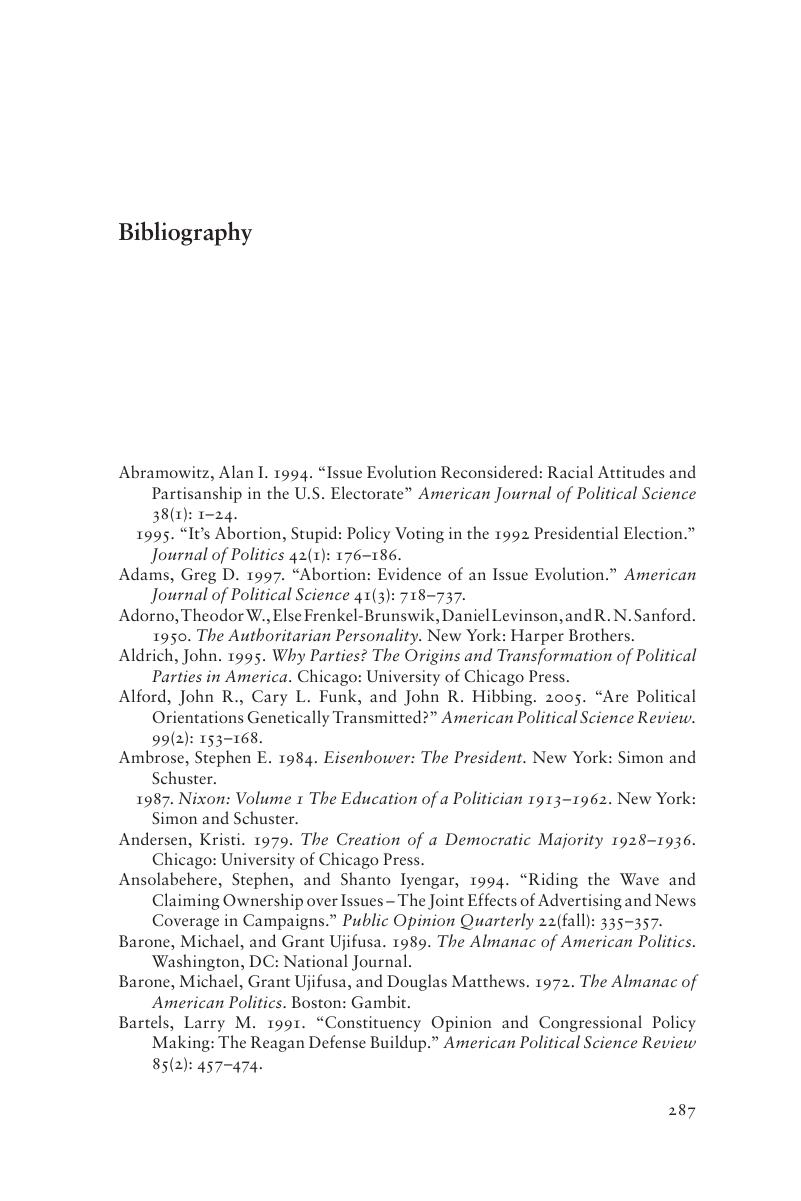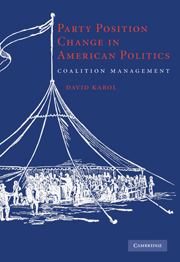Book contents
Bibliography
Published online by Cambridge University Press: 05 June 2012
Summary

- Type
- Chapter
- Information
- Party Position Change in American PoliticsCoalition Management, pp. 287 - 302Publisher: Cambridge University PressPrint publication year: 2009



